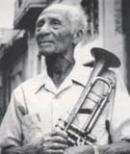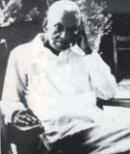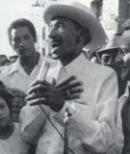The Guayabera: for Cuba and the whole wide world to wear
When it comes to Cuban identity, the so-called guayabera takes the cake. This is a traditional garment conceived in a perfect utility sense that combines comfort and elegance. But, what's the origin of this wear piece that Joseito Fernandez –an outstanding Cuban troubadour who wrote and took the well-known melody of Guantanamera all over the world- wore onstage, the same robe that expressed a patriotic ideal as 19th-century freedom fighters put it on with two slits on both sides to unsheathe the machete?
Origin and evolution Even though several countries have vied over the creation of the guayabera, in-depth research has laid bare its undisputed Cuban roots strongly linked to the local culture and traditions.
There are a few versions about its birth. The most widely accepted of all harks back to the 18th century in the city of Sancti Spiritu where pottery artist Jose Perez Rodriguez and his wife Encarnacion Nuñez –both from Spain's Granada- settled down in that location and set up shop by the banks of the Yayabo River. To his husband's request, Encarnacion sewed for him a slack shirt outfitted with plenty of big pockets to carry “the smokes and other little things from the shop.” Shortly after that, the new garment hit a voguish pace on a daily basis. At the onset, it was called yayabera, since residents of Sancti Spiritu were nicknamed after the Yayabo River. Yet, those huge front pockets were big enough to put away windfalls of guavas (guayabas in Spanish), a common fruit in that part of the country. Eventually, the garment was called guayabera.
The original conception of the guayabera evolved through the years. Braids were the first add-ons; then tucks and pleats were tacked on, and when the piece became more popular, buttons were sewn to the pockets and cuffs, while the collar was fluted up. Originally, white was the color of choice. Flax or other thinner fabrics were the right kind of cloth.
The guayabera as an expression of Cuban identity In the beginning, the guayabera was solely worn by the Cuban peasantry. In the so-called hick parties –typical expressions of Cuban folklore- the guayabera was the ultimate bib and tucker for punch-line improvisers who still sport this piece proudly. It's commonplace these days to watch expressions of that rural culture on TV.
I want a thatch hat and a flag I want a guayabera and a son to dance.
The above is the chorus line of a famous “redneck” tune sung by crooner Celina Gonzalez. The four elements mentioned in the lyrics –the thatch hat, the flag, the guayabera and the son dance- boil down to the nuts and bolts of what Cuban identity is all about.
Many singers and musical bands have affected this traditional garment to stress their nationality: Benny More, the world-class son singer known as the Rhythm Beater, used to wear guayaberas matching long slacks to paint a picture-perfect and singular image that always highlighted his Cuban identity.
On the other hand, Francisco Repilado, the famed Chan-Chan-singing Compay Segundo, has sported guayaberas, especially in his performances overseas, thus chipping in his own bit to underscore a Cuban image.
Members of many trios and musical groups that entertain patrons on the Caribbean island's nights put on guayaberas onstage. But it's not only music. Neither literature nor the fine arts have been able to escape the charming of this wear piece. Thus, prestigious Cuban painter Mariano Rodriguez recreated it in his work entitled “The Hicks.”
The list of examples citing the guayabera as an icon of popularity and Cuban roots could run endlessly. Suffice it to say, to wrap things up, that many fashion designers today home in on this particular garment. Its variants lie in the kind of fabric used in making them, ranging from polyester and cotton combined to silk and flax. For Cubans, however, beyond assortments of style, color and fabric, the guayabera is the priciest wear in the heart.




































































